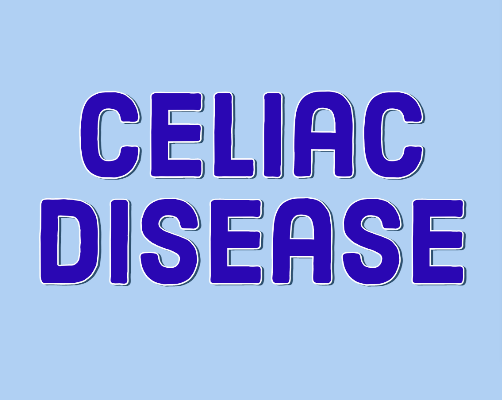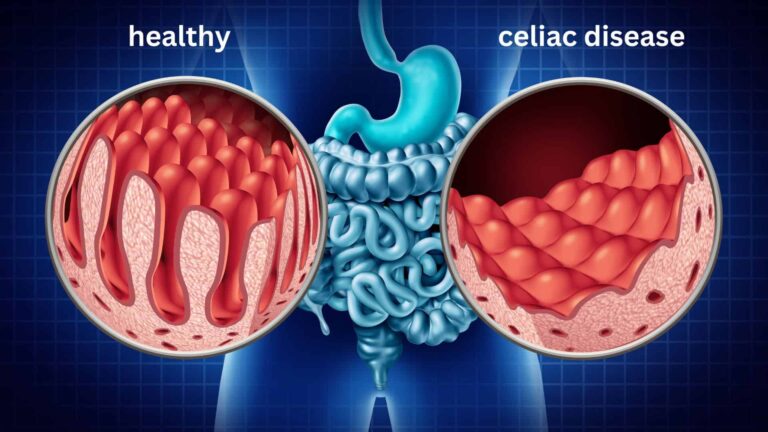Your Child’s Celiac Diagnosis: A Comprehensive Guide
First Steps After Your Child’s Celiac Diagnosis
Receiving the news of your child’s celiac disease diagnosis can stir a whirlwind of emotions – from concern and confusion to a deep sense of determination to provide the best care possible. It’s a moment that marks the beginning of a journey, one filled with challenges and adjustments, but also with opportunities for growth and resilience.
In this comprehensive guide, we’re here to walk alongside you, offering support, understanding, and practical advice as you take those crucial first steps toward managing your child’s health and well-being in the face of celiac disease.
Blood Test and Biopsy – Weighing the Options
Your world just shifted. Your child’s seemingly random tummy troubles, the fatigue, the missed playdates – they all have a name now: celiac disease. The blood test confirmed it, and the next battle looms: biopsy or not? It’s a big decision, especially when your kiddo is already dealing with so much.
On one hand, the thought of another procedure, needles, and possible discomfort leaves your heart heavy. You yearn to shield them, to wrap them in a bubble of gluten-free comfort. But the fear lingers. Are you sure it’s celiac? What if something else is hiding?
The truth is, a biopsy offers not just a confirmation, but a key. It unlocks a lifetime of certainty. Imagine a future where doubt doesn’t cloud every meal, every trip, every celebration. A future where “no, thank you” isn’t met with disappointment, but understanding. A future where your child thrives, knowing exactly what fuels their body and fuels their dreams.
Think of the biopsy as a tiny passport stamped with a definitive “celiac disease.” It opens doors to specialized doctors, support groups, and a wealth of resources. It eases travel anxieties, removes the constant questioning, and empowers your child to advocate for themselves.
Yes, the procedure might bring temporary discomfort. But the peace of mind it brings? That’s priceless. No more second-guessing, no more wondering “what if?” It’s like clearing a foggy path and letting the sunshine through.
Remember, you’re not alone in this decision. Talk to your doctor, and to other parents who’ve walked this path. Weigh the discomfort against the gift of knowledge. And remember, this journey is about so much more than a food restriction. It’s about empowering your child, building their confidence, and giving them the tools to lead a vibrant, healthy life. The biopsy might be a small step, but its impact can be life-changing.
Understanding Celiac Disease – Educate yourself
Your child’s celiac diagnosis feels like a whirlwind, right? A million questions swirl, anxieties bubble, and the unfamiliar world of gluten-free living stretches before you. But amidst the chaos, knowledge’s a powerful tool at your disposal. Educating yourself about celiac disease isn’t just about understanding gluten and ingredients; it’s about becoming your child’s strongest advocate and building a safe, healthy future together.
Think of it like this: your child is embarking on a new adventure, and celiac disease is the terrain. Learning about the landscape – the symptoms, the risks, the hidden pitfalls – equips you to navigate it confidently. You’ll understand why certain foods are off-limits, how to avoid cross-contamination, and what to do if symptoms arise. This knowledge empowers you to make informed choices at restaurants, school lunches, and even birthday parties, ensuring your child feels safe and included.
But the benefits go beyond just food. By understanding the impact of celiac disease on long-term health, you can proactively manage potential complications and advocate for your child’s medical needs. You’ll be able to answer their questions with confidence, dispel anxieties, and foster a sense of control in a world that might feel uncertain.
Remember, you don’t have to become an expert overnight. Start with reliable sources, connect with other parents, and ask questions. Every step you take towards understanding celiac disease empowers you to be a better guide, a stronger voice, and a beacon of hope for your child on this journey. So, take a deep breath, embrace the learning, and watch the path ahead become clearer and brighter, together. For more information read this guide for a gluten-free diet.
Transitioning to a gluten-free lifestyle
- Clear Out Gluten-Containing Foods
Transitioning to a gluten-free lifestyle starts in your kitchen, and the first step is a pantry purge. Think of it as a chance to declutter your pantry and embark on a delicious adventure. Read labels. Focus on the big three: wheat, barley, and rye. Don’t forget sources like malt vinegar, modified food starch, and hydrolyzed wheat protein.
Divide your pantry into two zones: “Keep” and “Discard/Donate.” Naturally gluten-free items like fruits, vegetables, canned beans, and legumes can stay. Others with clear gluten presence may find new homes through donation drives or food banks, reducing waste and helping others.
2. Decide on the “gluten-free zone” in your kitchen
- Dedicated Zone: Create a completely gluten-free area with separate appliances for your child, including a toaster, mixer, cutting board, and utensils. This minimizes risk but requires more investment.
- Shared Zone with Caution: If resources are limited, opt for thorough cleaning and dedicated tools within a shared kitchen. Use separate toasters, color-coded utensils, and clean appliances carefully after each use.
- Hybrid Approach: Consider dedicated appliances for high-risk items like bread toasters and cutting boards, while managing low-risk equipment like spatulas and mixing bowls with careful cleaning.
3. Navigating Social Situations
For kids with celiac disease, social situations can sometimes feel like minefields. Birthday parties, school lunches, and even playdates can be laden with hidden gluten dangers.
- Open Communication: Talk to your child about their needs and anxieties. Empower them to advocate for themselves politely but firmly, explaining their celiac disease and potential for reactions.
- Pack a “Gluten-Free Backpack”: Equip them with snacks, drinks, and sometimes even meals they know are safe, ensuring they never feel left out or hungry.
- Educate Others: Talk to hosts and teachers beforehand, explaining your child’s needs and offering suggestions for gluten-free options. Provide resources or even bring safe treats to share.
- Focus on Activities: Plan activities that don’t revolve around food, like playing games, going to the park, or engaging in shared hobbies. This keeps the focus on fun and minimizes food anxieties.
- Celebrate Victories: Acknowledge and praise your child’s efforts in navigating social situations successfully. This builds their confidence and motivates them to continue advocating for themselves.
Remember, it’s a journey, not a sprint. Patience, understanding, and open communication are key.
Letting go of familiar foods can feel like saying goodbye to old friends. But remember, this isn’t an ending, it’s a beautiful new beginning for your child’s health and well-being! Think of it as clearing out clutter to make space for a vibrant, gluten-free pantry. Imagine shelves filled with colorful fruits and vegetables, healthy grains like quinoa and brown rice, and delicious gluten-free alternatives to all their favorite treats.
Turning your kitchen into a gluten-free haven isn’t about deprivation, it’s about discovery! You’ll embark on exciting culinary adventures together, exploring new ingredients, textures, and flavors. Imagine bonding over baking gluten-free cookies, experimenting with homemade pizzas, and whipping up nutritious smoothies packed with goodness.
And remember, the benefits go beyond the taste buds. As you transition to a gluten-free lifestyle, watch your child’s energy soar, their tummy troubles fade, and their confidence blossom. Seeing them thrive, free from the discomfort of gluten, will fill your heart with joy and reaffirm that this journey, though it starts with clearing out the old, is truly paving the way for a healthier, happier future for your child.
Managing Celiac Disease Long-Term
Living with celiac disease is a long-term commitment, but it doesn’t have to be a burden. Instead, view it as an opportunity to build a healthier, happier future for your child. Here are some key strategies for managing the disease effectively:
- Embrace Routine: Consistent adherence to a gluten-free diet is crucial. Develop routines around grocery shopping, meal planning, and packing safe snacks to minimize the risk of accidental exposure.
- Find Your Tribe: Connect with other families managing celiac disease. Online communities, support groups, and even local gluten-free businesses offer invaluable resources, advice, and emotional support.
- Celebrate Milestones: Mark anniversaries of diagnosis, successful school lunches, or overcoming social challenges. Celebrate progress and reinforce the positive impact of managing celiac disease.
- Invest in Education: Stay informed about the latest research, treatment options, and gluten-free products. Empower your child to understand their condition and advocate for their needs.
- Focus on Wellness: Encourage healthy habits beyond diet, such as regular exercise, stress management, and adequate sleep. A holistic approach supports overall well-being and resilience.
Remember, managing celiac disease is a collaborative effort. By working with your healthcare team, prioritizing routines, seeking support, and fostering a positive mindset, you can help your child thrive on this journey. It’s not about limitations, but about creating a fulfilling, healthy life, one delicious gluten-free bite at a time.







